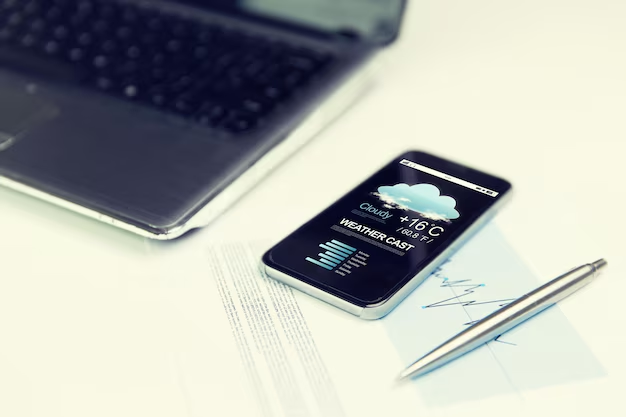Effortlessly Transfer Your iPhone Data: A Step-by-Step Guide
In the digital age, getting a new iPhone is always exciting, but the prospect of transferring data from your old device can seem daunting. Whether you're upgrading to the latest model or switching devices, ensuring a smooth data transfer is crucial for keeping your important information safe and accessible. Fortunately, Apple provides several ways to transfer your data seamlessly. This guide explores the various methods to transfer your iPhone data effectively, ensuring a hassle-free experience.
Why Transferring Data to Your New iPhone Matters
When upgrading your phone, it’s not just about the sleek design or enhanced features; it’s about preserving your photos, contacts, messages, apps, and settings that capture so much of your daily life. By understanding the best transfer methods, you not only save time but also ensure that no vital data gets left behind. Here are key methods to consider:
- iCloud
- Quick Start
- iTunes/Finder
- Third-Party Apps
Using iCloud to Transfer Data 📲
iCloud offers one of the most convenient ways to transfer data from one iPhone to another. With iCloud, you can back up your device wirelessly and restore your data to your new iPhone.
Backup Your Old iPhone
- Connect to Wi-Fi: Make sure your iPhone is connected to a stable Wi-Fi network.
- Go to Settings: Open the Settings app and tap on your name at the top.
- Select iCloud: Navigate to iCloud and then tap on "iCloud Backup."
- Initiate Backup: Ensure that iCloud Backup is toggled on, then tap “Back Up Now.”
Restore to Your New iPhone
- Turn on New iPhone: Power on your new iPhone and follow the setup instructions until you reach the "Apps & Data" screen.
- Select Restore from iCloud Backup: Choose "Restore from iCloud Backup" and sign in with your Apple ID.
- Choose Backup: Select the most recent backup of your old iPhone to restore your data.
Tip: Keep your device connected to Wi-Fi during the entire process to prevent interruptions.
Quick Start: Transfer Data Directly
For an even faster setup, Apple’s Quick Start feature allows you to transfer data wirelessly from one iPhone to another.
Steps to Use Quick Start
- Place Devices Close: Ensure both iPhones are next to each other.
- Turn on New iPhone: Power on your new device and place it near your current device.
- Authenticate: A prompt will appear on your current device; confirm the setup.
- Use Camera: Align the animation shown on the new iPhone with your old iPhone’s camera.
- Transfer Data: Follow on-screen prompts to complete the transfer.
Bonus: Quick Start can also use iCloud to transfer data, supplementing with a unique temporary Wi-Fi connection between the two devices.
Transfer Using iTunes or Finder
For those who prefer a wired connection or have limited internet access, using iTunes (for Windows and macOS Mojave or earlier) or Finder (macOS Catalina or later) is a viable option.
Backup with iTunes/Finder
- Connect iPhone to Computer: Use a USB cable to connect your old iPhone to the computer.
- Open iTunes/Finder: Launch the appropriate app and select your device.
- Backup Now: In the Summary tab, select “Back Up Now.”
Restore Data to New iPhone
- Connect New iPhone: Connect your new iPhone to the computer.
- Launch iTunes/Finder: Open the app and select your new device.
- Restore Backup: In the Summary/Open Finder tab, choose “Restore Backup” and select your previously saved backup file.
Important: Ensure the software is up-to-date to avoid compatibility issues.
Third-Party Apps: A Viable Alternative
Several third-party apps can simplify the data transfer process, offering additional features and flexibility. Apps such as iTransor and PhoneTrans are popular choices for comprehensive data transfer.
Pros and Cons of Third-Party Apps
- Pros: Additional features like selective data transfer, and support across different OS versions.
- Cons: Some apps may require a purchase, posing an extra cost.
Preparing for the Transfer: Essential Steps
Before you dive into transferring data, ensure that:
- Backup Frequency: Regular backups are up-to-date.
- Battery Levels: Both phones have a sufficient charge.
- Software Updates: Devices are running the latest OS version.
Quick Reference Summary: Transfer Methods to Consider
Here's a snapshot of the main methods to transfer your iPhone data to your new device:
| Method | Description | Pros | Cons |
|---|---|---|---|
| iCloud | Wireless backup and restore via iCloud. | Easy, automatic, wireless. | Requires Wi-Fi and iCloud storage space. |
| Quick Start | Direct device-to-device transfer. | Fast, minimal user input. | Needs both devices nearby and on iOS 12.4+ |
| iTunes/Finder | Wired backup/restore with a computer. | No internet needed. | Requires USB cable and physical access. |
| Third-Party | Additional app-based transfer options. | Flexible, feature-rich. | Potential cost and learning curve. |
Pro Tips for a Smooth Transition
- Double-Check Space: Ensure cloud or device storage is sufficient.
- Secure Passwords: Sync or save passwords in a secure manner.
- Check Connectivity: Stable Wi-Fi or lightning cables ensure no dropouts.
Transferring data may seem complex, but with the right method and preparation, it's seamless and rewarding. By choosing the best-suited method for your needs, you ensure continuity and security as you transition to your new iPhone. Explore the variety of options available, and enjoy your new setup with peace of mind! 🌟

Related Topics
- How Can I Transfer a Video From Iphone To Computer
- How Can I Transfer Apps From Iphone To Ipad
- How Can I Transfer Apps From One Iphone To Another
- How Can I Transfer Contacts From Iphone To Iphone
- How Can I Transfer Contacts From One Iphone To Another
- How Can I Transfer Data From Iphone To Android
- How Can I Transfer Data From Iphone To Iphone
- How Can I Transfer Data From Iphone To Samsung
- How Can I Transfer Files From Android To Pc
- How Can I Transfer From Iphone To Samsung